Gary Wentz is a carpenter and the Editor-in-Chief of The Family Handyman. He claims to have torn out more than two acres of plaster and lath. He'll show you how to remove plaster and lath faster, safer and better.
Plaster and Lath Tear-Off Tips
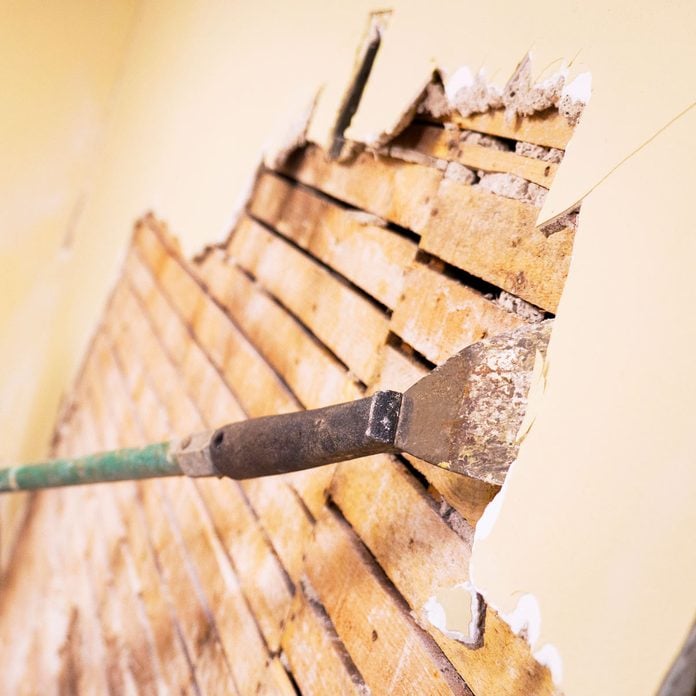
Plaster and Lath Pro Tips
Removing plaster and lath is always an ugly ordeal, but my first try, 25 years ago, was the worst. I made every mistake in the book—mistakes that cost me time, frustration and blood. Since then, I’ve gotten smarter. Read on and I’ll show you how to remove plaster and lath faster, safer and better.
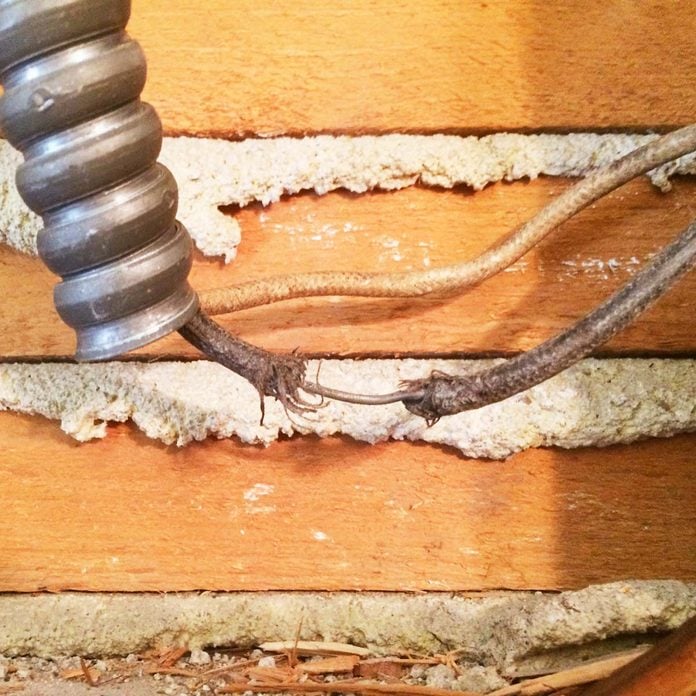
Turn Off the Power
Old walls hold hazardous surprises like wires without insulation and devices without junction boxes. In one wall I tore out, the wiring was embedded in the plaster! So turn off the circuits inside the wall and check any outlets or switches with a non-contact voltage tester before starting the tear-out.
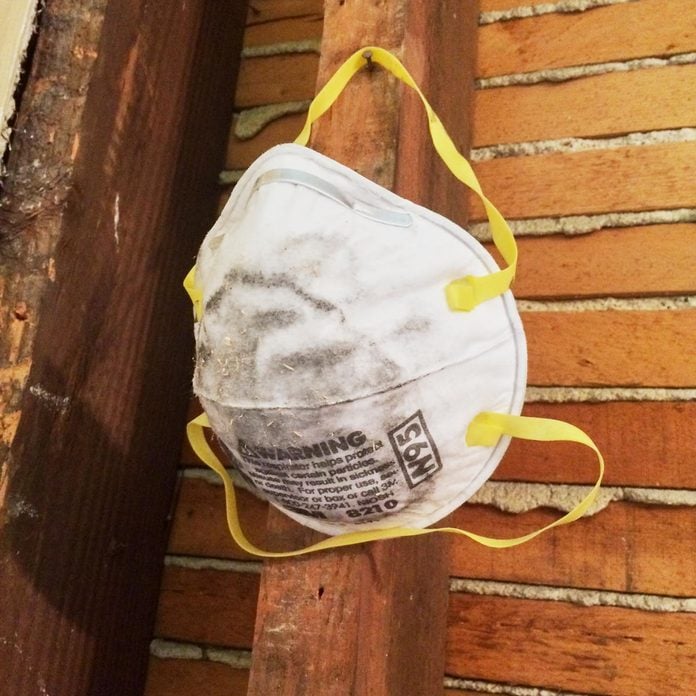
Prepare for a Dust Storm
Demolishing plaster and lath is a dusty, filthy job. Wear a dust mask, cover doorways with painter’s plastic, turn off the furnace or central air conditioning, and cover HVAC grates. Check out these tips for how to reduce dust.
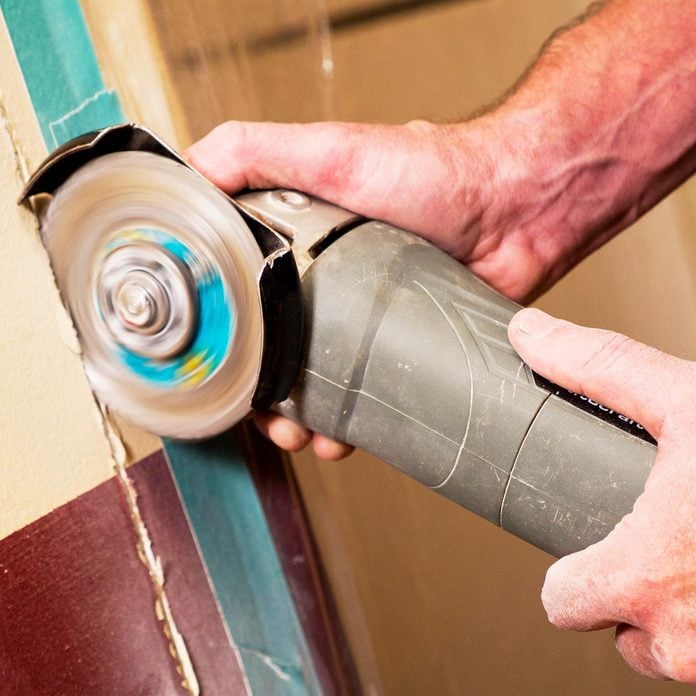
Cut the Plaster Walls
As you break up plaster, cracks can spread to adjoining walls and ceilings. To prevent that, cut the plaster where you want the demolition to stop. I make perimeter cuts with a grinder and a diamond blade. A diamond blade can also cut through metal lath, which was sometimes added over wood lath at corners and archways.
Cutting with a grinder whips up tons of dust. You can also use an oscillating tool equipped with a diamond or carbide- grit blade, which will cut slower but with less mess.
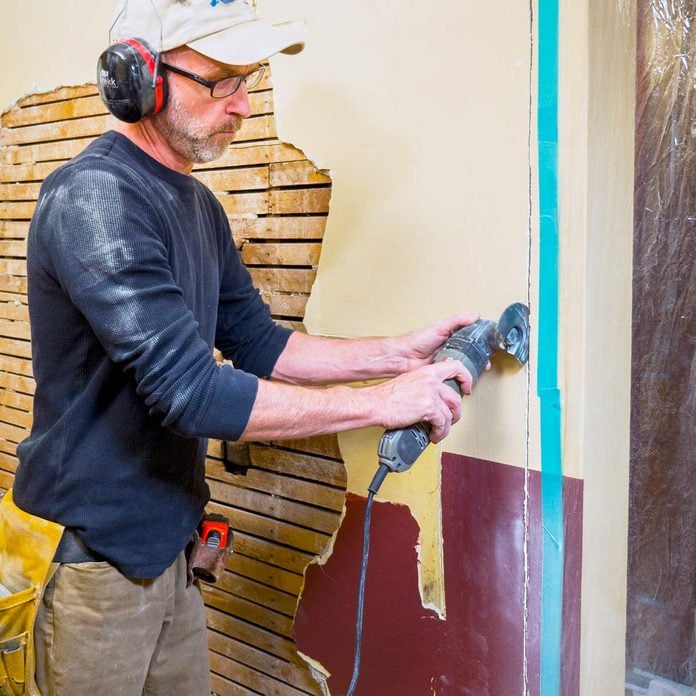
Cut the Lath
After cutting the perimeter of the plaster walls, cut the wood lath to prevent cracking the adjoining walls and ceilings. An oscillating tool with a round blade is perfect for this.
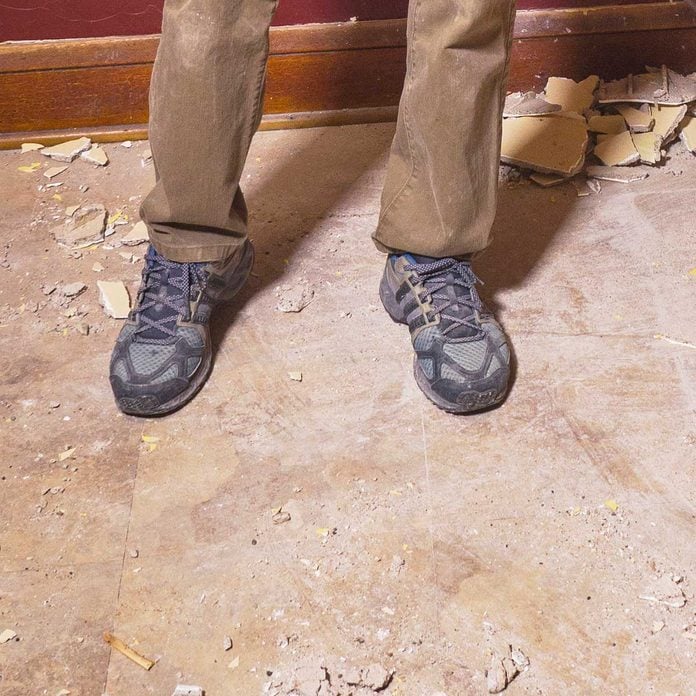
Protect Floors
Lath nails and plaster chunks really tear up flooring. The best protection is 1/8-in. hardboard taped together at seams. With wood floors, I use hardboard even if I plan to refinish the floor later. Lath nails can leave deep gouges that are hard to sand out.
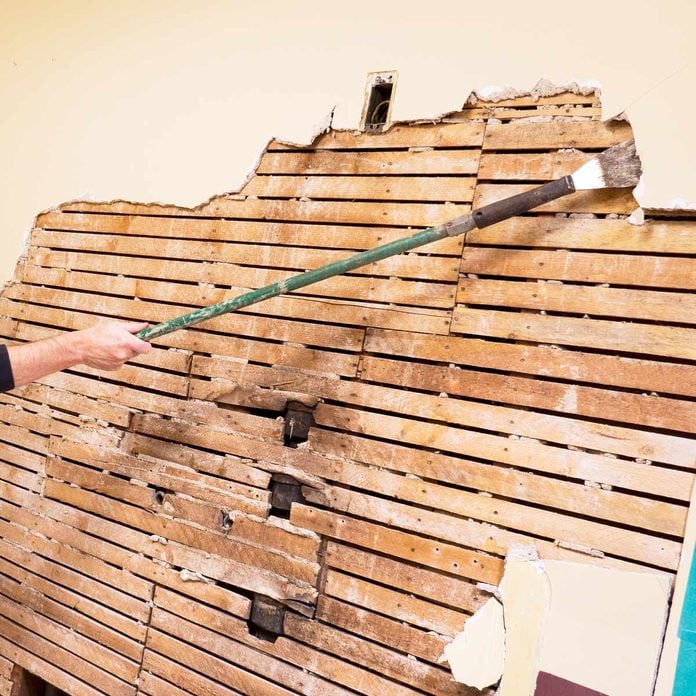
Scrape Off the Plaster Walls
Chip away a small starter hole with your hammer claw. Then get to scraping. My tool of choice is a bent pole scraper that screws onto a broom handle (mine is a Hyde No. 12070; $15). Some home wreckers prefer an ice scraper or a square shovel. Whatever you use, scrape parallel or diagonal to the lath. If you scrape perpendicular to the lath, your scraper will break through.
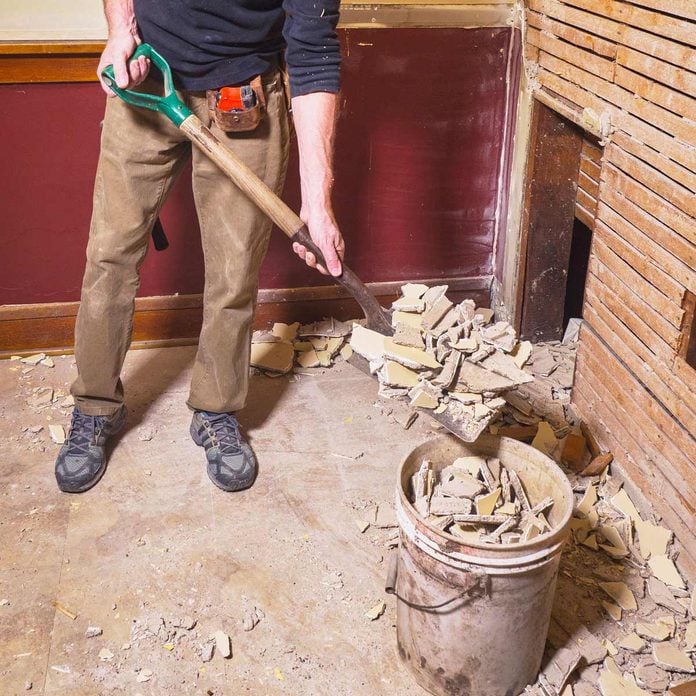
Scoop Up the Plaster
Shovel the plaster into buckets or heavy-duty trash bags. If you choose bags, don’t fill them too full; plaster is heavy! Check out our tips for how to remove a wall and other demolition tips.
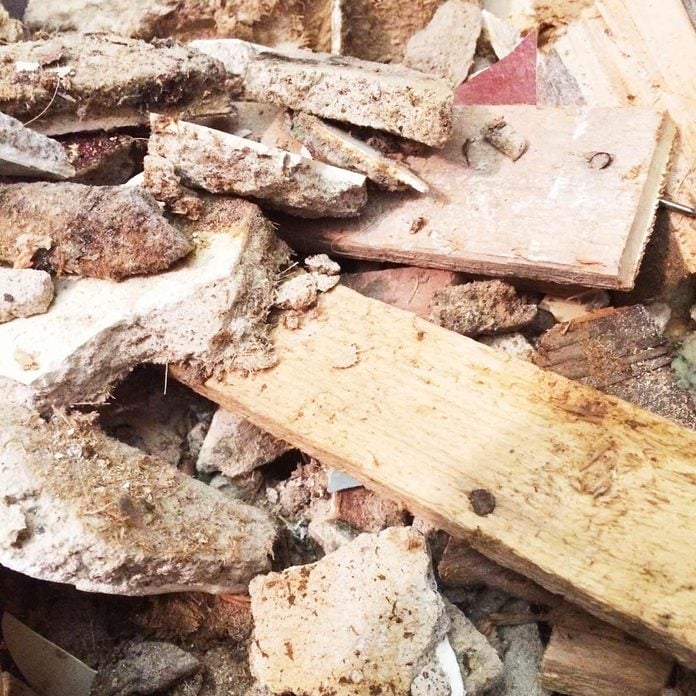
Don’t Mix Plaster and Lath
You could tear off plaster and lath at the same time— that’s actually a little faster than attacking them separately. But cleaning up a mountain of mixed debris is painfully slow. You can’t shovel up the plaster until you fish out all the buried lath, one stick at a time. So tear off the plaster, clean up, and then strip off the lath.
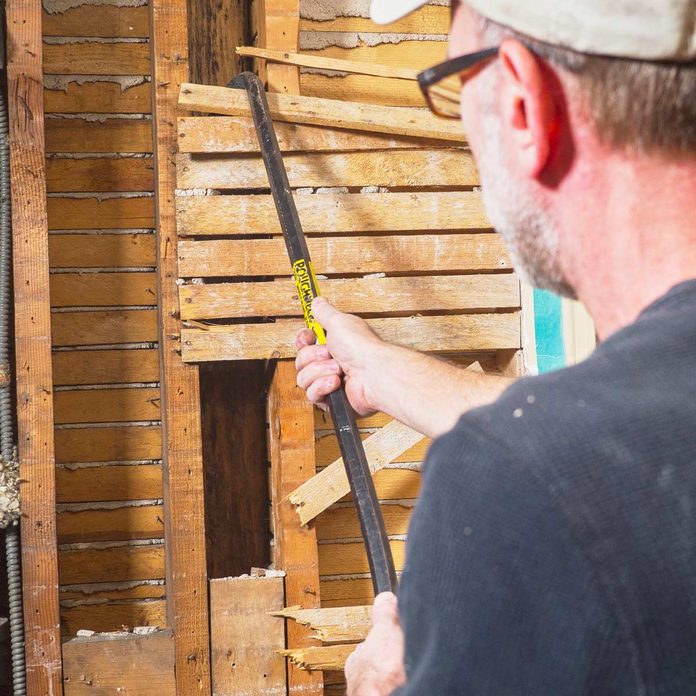
Yank Off the Lath Board
Lath nails come out easily, so you can often pull off two or three rows at a time. I like to use the hook of a wrecking bar. Try to remove full lengths of lath; they’re easier to pick up and haul out than a million splintered sticks.
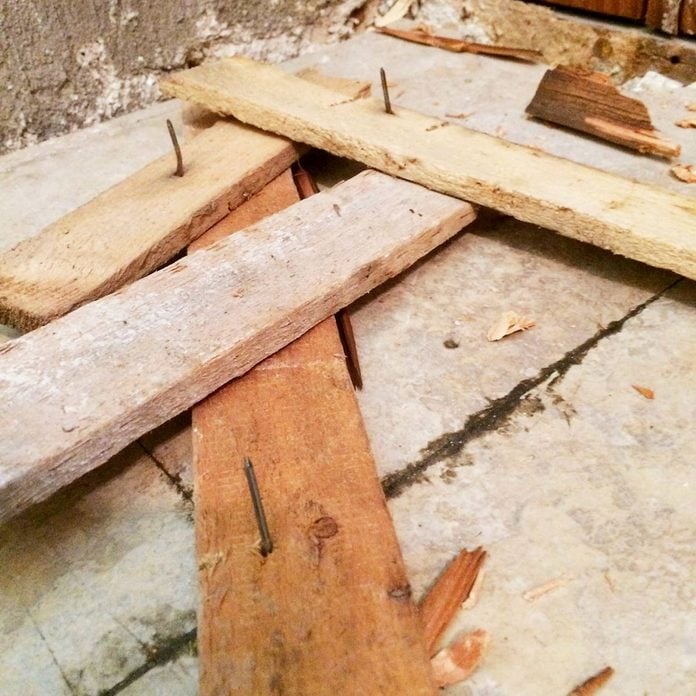
Watch Where You Step
When you step on a big nail, you can often feel the pressure and shift your step to avoid an injury. Not with lath nails. Those sharp, skinny buggers will puncture your shoe and foot before you know what’s happened.
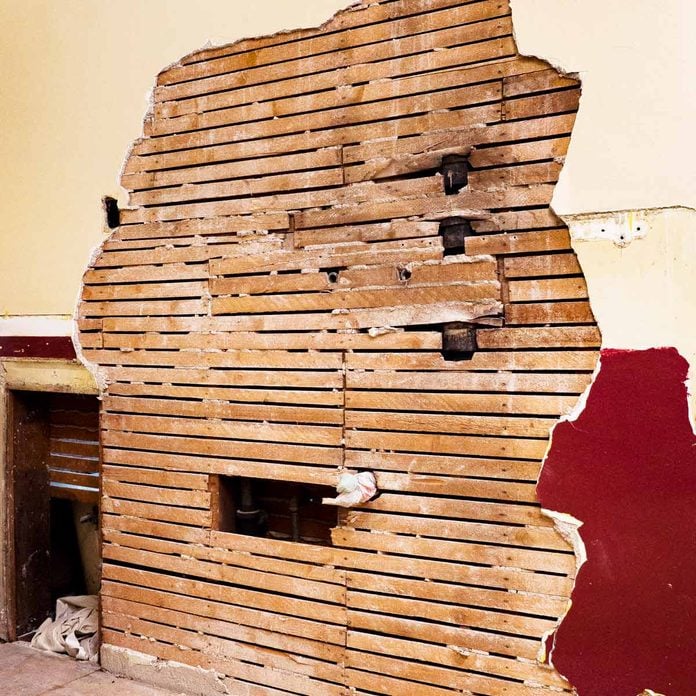
Does Plaster Contain Asbestos?
Adding fiber to plaster, for extra strength and crack resistance, was standard practice for centuries. The wall shown here contained horsehair. But at least one major plaster manufacturer used asbestos instead, and did so from the 1920s until the ’70s. So you can’t be sure unless you test. Just search online to find a testing service and send in a sample. You’ll get the results in about a week and pay about $60. If the plaster does contain asbestos, check with your local inspector for demolition regulations. Check out these 100 super scary home inspector horror stories.
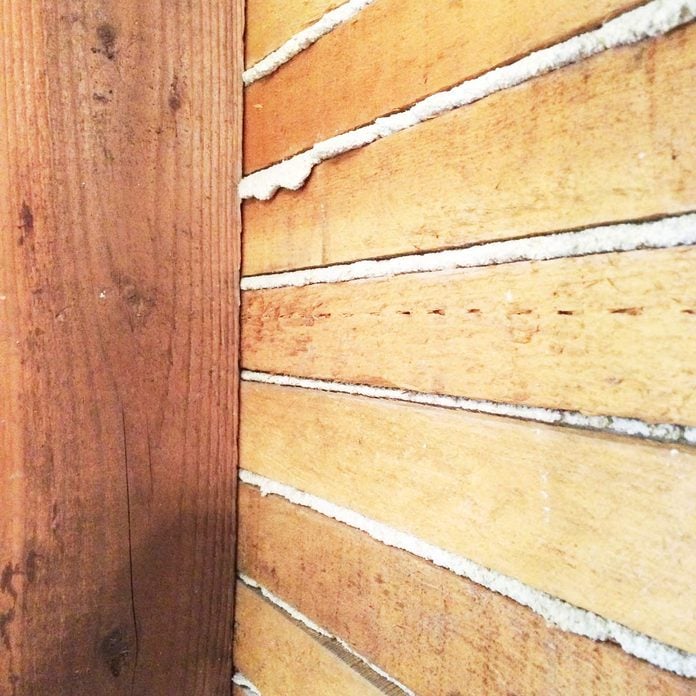
Hit the Other Side From Behind
If you’re removing plaster and lath from both sides of a wall, do this: Completely strip one side of the wall, then attack the other side from behind. I like to stab at the lath with a square shovel, right next to studs. As the lath loosens, the plaster breaks away and falls off. After that, the lath is already loosened and pops off with a few more shovel whacks. Karate kicks work too!